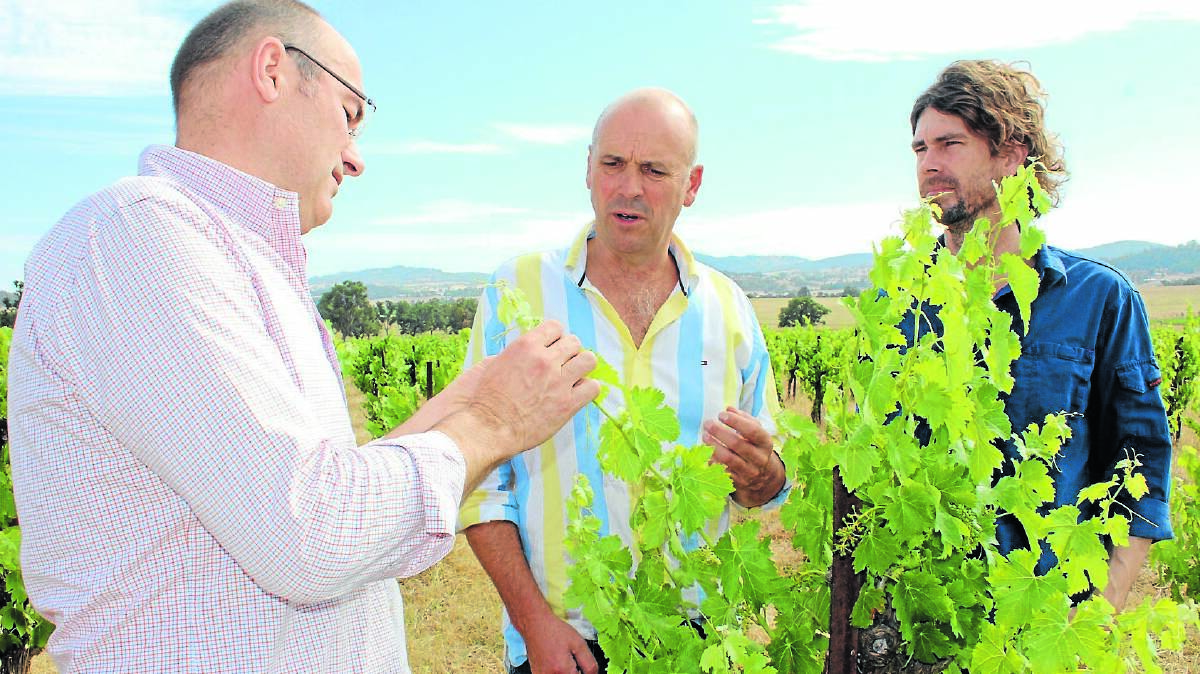
Lowe Wines is working with the University of Adelaide to research methods of making low alcohol wines.
Subscribe now for unlimited access.
or signup to continue reading
Lowe Wines CEO David Lowe said previous research showed consumers would support a low alcohol wine, but they didn’t want that wine to have less flavour than conventional wines.
“The challenge for us is to look at it through the grape growing and wine making perspectives and work out methods that will allow us to capture as much flavour as we can,” Mr Lowe said.
The University of Adelaide Oenology department has received a grant from the Australia Research Council to create the Industrial Transformation Training Centre (ITTC) for Innovative Wine Production at the Waite Research Institute.
With $2.4 million in funding from the Australia Research Council and $1.2 million in in-kind support from the project partners, ITTC will be investigating new methods and technology to address challenges facing the wine industry, including climate change, water restrictions, changing consumer preferences and rising wine alcohol content.
Fifteen partners are taking part in the research, from small wineries like Lowe Wines to large companies including Treasury Wine Estates and Sainsbury’s supermarkets.
“What interested us was the pursuit of commercialising low alcohol wine, because the wine industry needs to find ways to innovate,” Mr Lowe said.
“Wine is getting stronger in alcohol but there is a constant push from consumers for the industry to create wines that are more health conscious.”
'We’re not talking about simply lowering the content to the same percentage for every wine.'
Professor Vladimir Jiranek, head of Wine Sciences at the University of Adelaide, was in Mudgee on Friday to discuss the progress Lowe Wines had been making with early harvesting, a technique the winery has been using for several years in their small batch varieties.
“We’re doing a different style that most, harvesting the grapes before they’re ripe so there is low alcohol potential,” Mr Lowe said.
He said the additional benefit for Lowe Wines was being able to tap in the research from world leaders in the wine industry and to be an advocate for low-alcohol wines for the consumer.
“We’re ahead of the game really,” he said.
“Lowe Wines sees a huge commercial opportunity in being involved in this research.”
Professor Jiranek said the training centre hopes to develop methods to remove sugar pre-fermentation; to look at the way fermentation was inducted in wineries; to develop methods to remove alcohol through filtration and distillation without affecting the flavour; and ultimately to integrate all these strategies,
“What we want is to essentially be able to dial up any alcohol content and flavour profile that we want,” he said.
“If we can get to the middle of the goal than I think we will have achieved quite a bit.
“Hopefully, we’ll be able to produce outcomes that will be applicable to all of the wine industry and not just in regards to low-alcohol content.”
Professor Jiranek said alcohol content has been creeping up slowly in wines over the past few years.
“The average for a red at the moment is around 14 percent but because it’s an average, we know there are some wines out there that are pushing 18 per cent,” he said.
“We’re not talking about simply lowering the content to the same percentage for every wine.
“What we’re talking about is a number of targets that include alcohol content at each end of the scale,”
“What we hope to be able to do is lower a red with 16 per cent content to 14.5 percent to allow for international exportation.
“Or to lower a wine to have the same alcohol content as a beer. And we want to try and do all of this without compromising the taste and flavour.”

